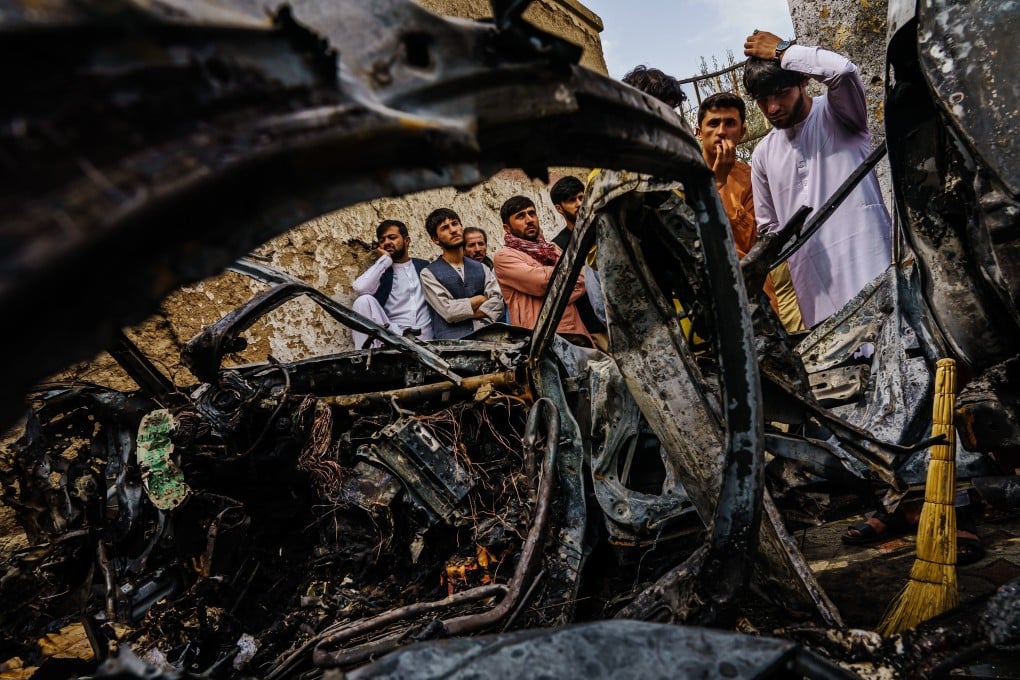Advertisement
Opinion | Kabul drone strike exposes myth of Joe Biden’s ‘over the horizon’ war on terror
- The death of 10 Afghan civilians in what the US military termed ‘a tragic mistake’ is a reminder of the problems in relying on drone warfare
- Not only are drones fallible, but the invulnerability of their operators increases the propensity for unchecked aggression
Reading Time:3 minutes
Why you can trust SCMP
18

Smouldering wrecks barely recognisable as vehicles are a common sight these days following a drone strike. Technological advancements have transformed the use of drones in the war on terror, from scout missions in the early days – searching for Osama bin Laden in Tora Bora, for example – to remote-controlled combat.
Advertisement
But 20 years on, a reminder that “precision strikes” can be anything but has come from Kabul.
Following the suicide attack at Hamid Karzai International Airport on August 26, which killed 169 Afghans and 13 American servicemen, fears were high that another strike was imminent. Three days later, a United States drone struck a car supposedly packed with explosives, killing 10 Afghan civilians.
While it acknowledged that some were innocent, the US military initially insisted it was a “righteous strike” that prevented another suicide attack.
An investigation launched by American media proved the Pentagon wrong barely three weeks later. On September 17, the military reversed course, and apologised for what it called a “tragic mistake” which took the lives of innocents, including children.
Advertisement
The incident was a shocking reminder of the dangers that surround the use of drones, and should prompt lawmakers and other government officials to take a closer look at the procedures that govern such strikes.

Advertisement
